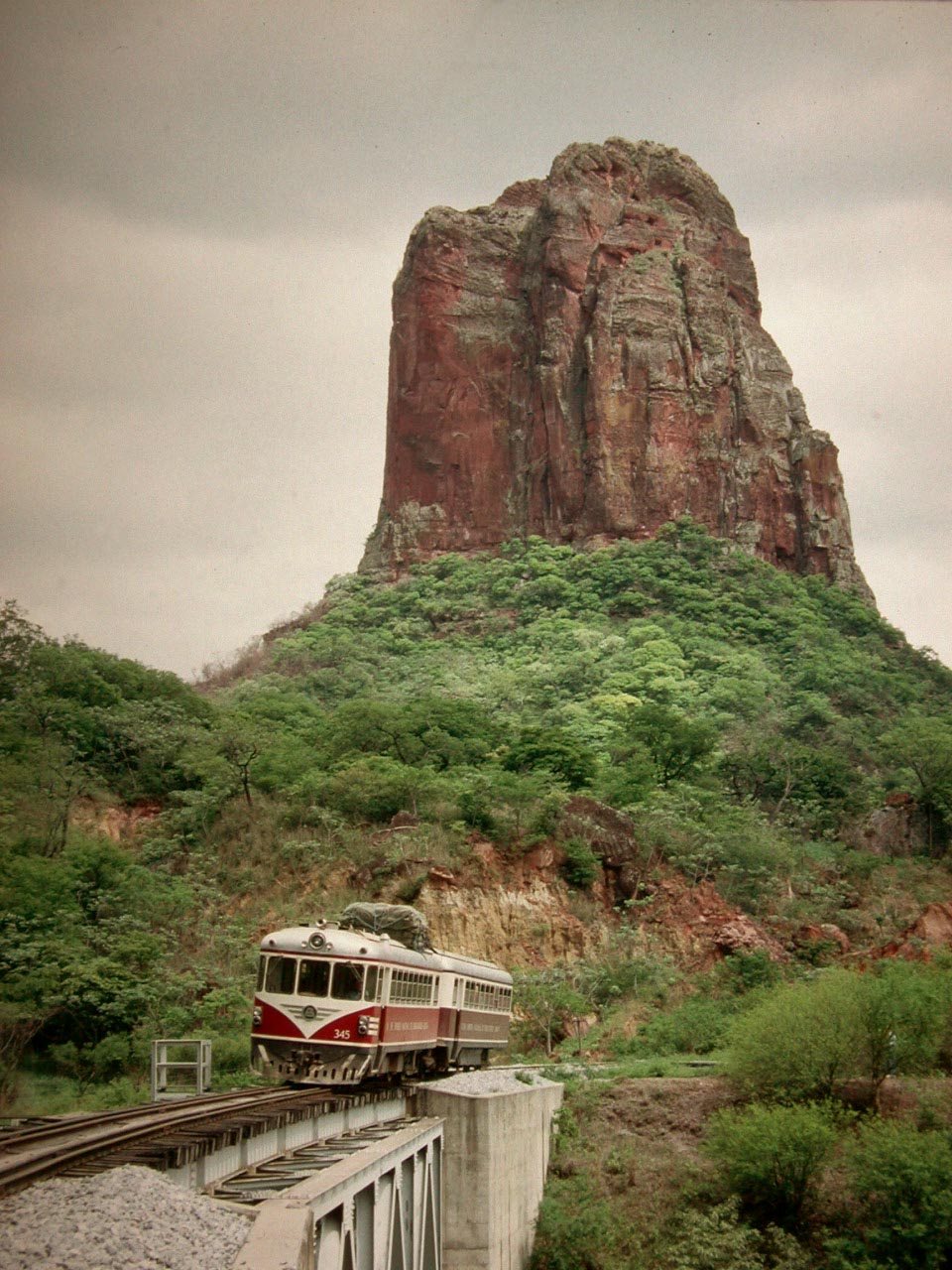
Having mastered the intricacies of doing my ablutions in a bucket of water (as does most of the world's population), I went to breakfast where there was some discussion about today's destination. If we went to Puerto Quijarro, on the Brazillian border, we might be stranded there for the duration of the strike. It is possible to fly from there to Santa Cruz, but the flights would likely be fully booked and there was also a suggestion that the flights might be cancelled. In my North American thinking, it was obvious that we should return to Santa Cruz. However, one can never discount the latin mind which can easily come to different decisions based on different thinking.
Robore is a crew change point.
Animals keep the grass low.
It quickly started to rain. The predominant colours in Robore are bright emerald green punctuated by bright earth-red slashes. Getting to the station, I was somewhat relieved to see the autocarril pointing west towards Santa Cruz.
Our first movement authority took us as far as Limoncito where we had to wait for a freight train. A call over the radio indicated that one of the party had left his wallet in the room at Robore and a taxi had been dispatched to Limoncito to return it. We took the siding at Limoncito and trooped through the muddy streets out of town and down to where the road forded a river in the jungle. Green parrots were flying noisily from tree to tree. A young girl came along with a laden donkey and had some difficulty in getting it to wade through the water. Two pigs passed by and swam to the other side. I realized why we were down here when a taxi appeared on the other side bearing the intact wallet.
The burro wasn't very keen!
Suddenly a taxi appeared out of the jungle.
Back at the station a small crowd had gathered for the arrival of the mixed train which was hauled by locomotive no. 972. The passenger car was so crowded that several people were riding on a couple of flat cars on the train.
Leaving Limoncito I was able to enjoy the best scenery on this line. Just after Chochis there are some rock spectacular rock formations. Enormous red pinnacles stand high out above the jungle. The most prominent seemed to be glowing in the light rain. Quite a spectacular sight and one which the aboriginal inhabitants of the area must have held in awe.
. .
Rock formation near Chochis.

The same impressive rock formation taken during a trip
in 1994
We continued on to Taperas where we had to take the siding for another freight train headed up by locomotive no. 2007. It was noon and we were going to be here for at least an hour and so we crossed the mud to a small restaurante where an excellent meal was provided at short notice. Chicken soup with boiled plantain was followed by meat, boiled potatoes and rice. If the food was excellent the coffee was superior. It was Brazillian and quite possibly the best cup of coffee I have ever had. A small kitten was wandering among our feet while a little dog was giving a chicken a difficult time under the next table. A man dropped by out of the rain to sit and wish us “buen provecho”. It is remarkable that, in spite of the mud, wet weather and other adversities, the Bolivian campesinos smile a great deal. They are a quiet, gentle and polite people.
. .
Soup at Taperas and the lady who prepared it.
. .
The weather at Taperas was atrocious.
Approaching San Jose the weather improved. This was a good thing as a window fell out of the car. From San Jose we had a clear run to Pailon. There are many termite mounds on the higher drier land. We stopped for a parada tecnica in an area with no bushes so the six of us stood facing out at all four compass locations around the car like dogs marking their territory.
We then found out that tomorrow’s strike had been called off so we could have gone to Puerto Perez after all. The Bolivian factor strikes again.
A block train of cane alcohol, new traffic from Montero,
near Santa Cruz, for export to Brazil.
Locomotive 2005 was waiting on the main line for us at Pailon. It had a long train of tank cars containing alcohol for export. We took the siding and 2005 quickly left town. As I stood and examined the departing train my ears were assaulted by the loud mewing from the frogs.
It looked as if we would have a straight run into Santa Cruz but I had discounted the Bolivian factor. We entered the long road-rail bridge at Puerto Pailon only to find a truck stalled on the roadway. Someone made a joke about bloqueos. It turned out that they were changing a tire on the truck and the delay was only some fifteen minutes.
The last leg into Santa Cruz was made in darkness after a twelve hour trip. The railway part of the station was deserted and locked up. The policeman did not take too kindly to us walking through his office to get out.
We found a hotel in the centre of Santa Cruz and I was surprised to have to walk through the hotel lobby in a fine mist. Hope the roof doesn’t leak in my room.
